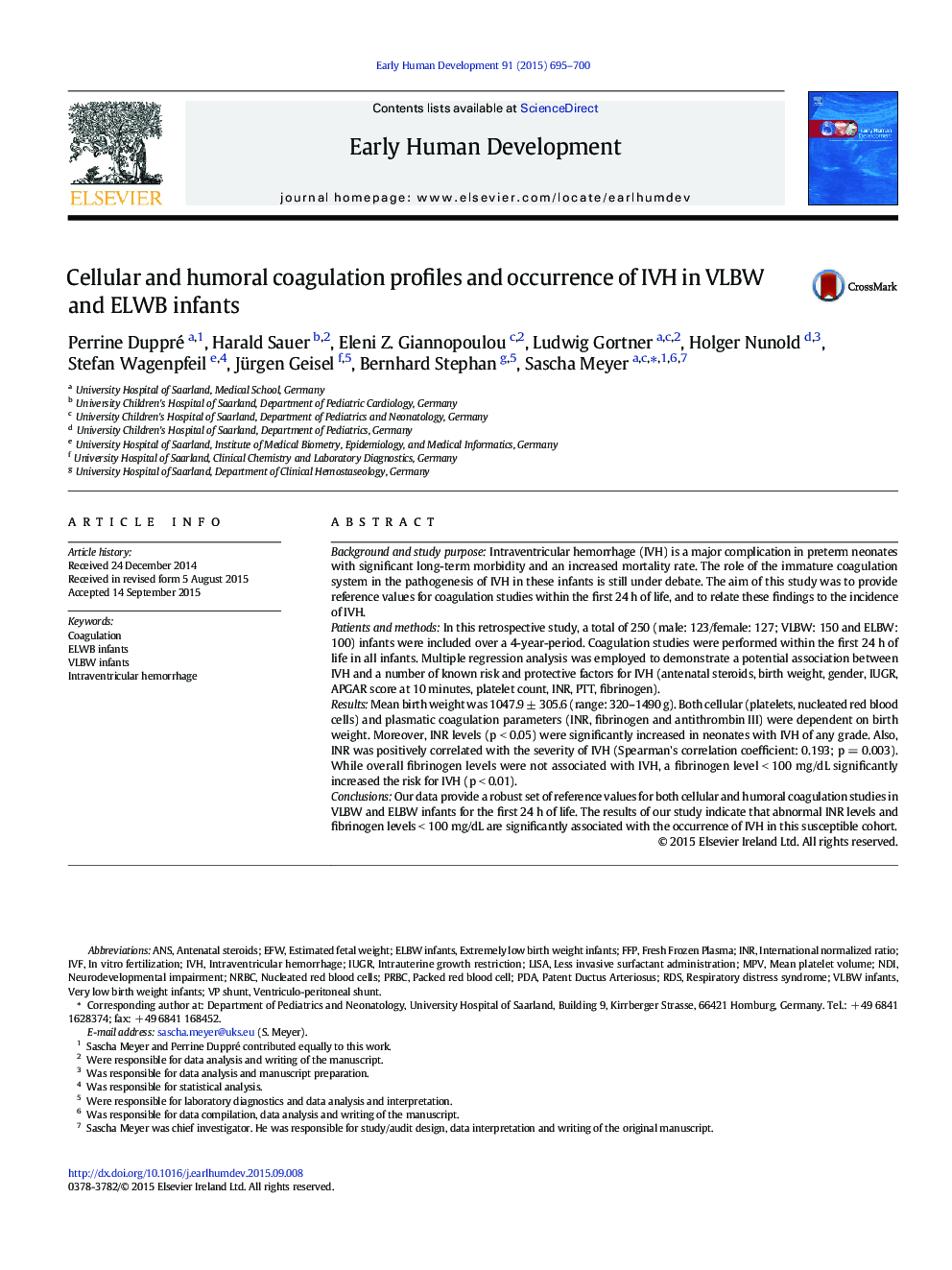| Article ID | Journal | Published Year | Pages | File Type |
|---|---|---|---|---|
| 3916702 | Early Human Development | 2015 | 6 Pages |
•Our study provides the largest set of reference values for coagulation parameters in VLBW/ELBW infants in the first 24 h of life•Coagulation parameters are dependent on birth weight/gestational age•INR levels are significantly associated (p < 0.05) with early IVH of any grade
Background and study purposeIntraventricular hemorrhage (IVH) is a major complication in preterm neonates with significant long-term morbidity and an increased mortality rate. The role of the immature coagulation system in the pathogenesis of IVH in these infants is still under debate. The aim of this study was to provide reference values for coagulation studies within the first 24 h of life, and to relate these findings to the incidence of IVH.Patients and methodsIn this retrospective study, a total of 250 (male: 123/female: 127; VLBW: 150 and ELBW: 100) infants were included over a 4-year-period. Coagulation studies were performed within the first 24 h of life in all infants. Multiple regression analysis was employed to demonstrate a potential association between IVH and a number of known risk and protective factors for IVH (antenatal steroids, birth weight, gender, IUGR, APGAR score at 10 minutes, platelet count, INR, PTT, fibrinogen).ResultsMean birth weight was 1047.9 ± 305.6 (range: 320–1490 g). Both cellular (platelets, nucleated red blood cells) and plasmatic coagulation parameters (INR, fibrinogen and antithrombin III) were dependent on birth weight. Moreover, INR levels (p < 0.05) were significantly increased in neonates with IVH of any grade. Also, INR was positively correlated with the severity of IVH (Spearman's correlation coefficient: 0.193; p = 0.003). While overall fibrinogen levels were not associated with IVH, a fibrinogen level < 100 mg/dL significantly increased the risk for IVH (p < 0.01).ConclusionsOur data provide a robust set of reference values for both cellular and humoral coagulation studies in VLBW and ELBW infants for the first 24 h of life. The results of our study indicate that abnormal INR levels and fibrinogen levels < 100 mg/dL are significantly associated with the occurrence of IVH in this susceptible cohort.
